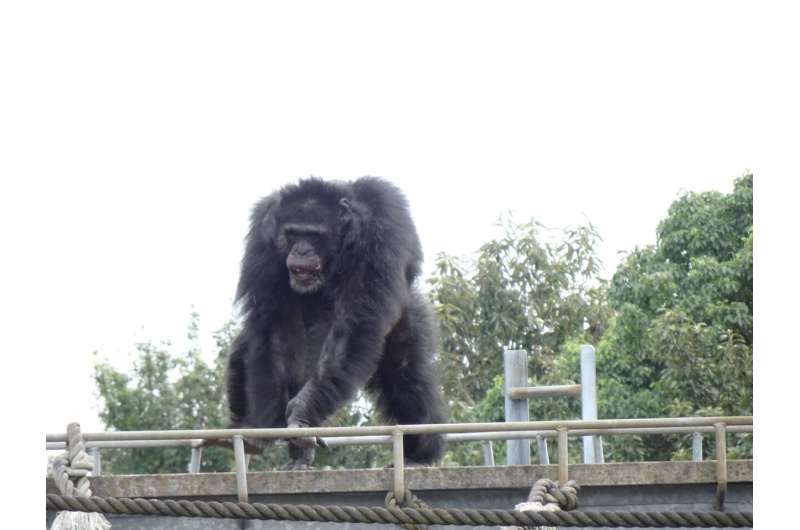December 24, 2019 report
Chimpanzees spontaneously dance to music

A pair of researchers at Kyoto University has found that chimpanzees will spontaneously dance to music. In their paper published in Proceedings of the National Academy of Sciences, Yuko Hattori and Masaki Tomonaga describe observing spontaneous dancing in chimps and how one chimp behaved when tested on dancing tendencies.
Music tends to make people move. Whether tapping out a beat, swaying or outright dancing—people respond. Prior research has shown that some animals, such as cockatoos, tend to move when they hear music, too. In this new effort, the researchers built on a recent report of chimpanzees spontaneously dancing in a sort of conga line. They noted that prior research has also found that chimps engage in dance-like behaviors sometimes when it rains, or when they are near a waterfall.
The initial experiment by the researchers involved trying to teach an adult female to keep a beat—that experiment did not go according to plan, but the researchers noticed that another nearby chimp would start to dance whenever they played music. Intrigued, the researchers played music to a group of chimps (three adult males and four females) and found that all of the chimps responded to the music by moving in dance-like ways—though the degree to which they danced varied greatly between them. Overall, they found that the males tended to dance more than the females. They also found that the chimps had different moves—some swayed, some knocked on the walls of their enclosure and one even tapped her foot. They also noted that some of the males hooted along with the music.
To learn more about dancing with chimps, the researchers isolated one of them—a male called Akira. He was chosen because he danced the most among those the team was studying. He was subjected to periods of piano music with a repetitive bass note for 24 days. He was also subjected to random notes to find out if he was responding to the music or the beat. The researchers report that Akira danced whenever music was played regardless of its tempo—and he danced just as much. The researchers were not able to explain why music made the chimps dance but suggest further study could help learn about the evolution of dance in humans.
More information: Yuko Hattori et al. Rhythmic swaying induced by sound in chimpanzees (Pan troglodytes), Proceedings of the National Academy of Sciences (2019). DOI: 10.1073/pnas.1910318116
Journal information: Proceedings of the National Academy of Sciences
© 2019 Science X Network





















